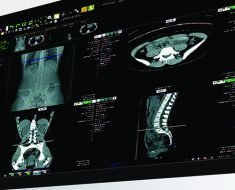
To function well in society, people must be able to control their emotional reactions from time to time. This usually goes well, but this control can fail, for example with aggressive behavior in traffic or in people with social anxiety that have a strong tendency to avoid social situations. Brain stimulation may help to improve control over this automatic behavior. This is what brain researchers from the Donders Institute at Radboud University show in a new publication in eLife on October 27.
The results could be relevant for future treatment of psychological disorders in which people have reduced control over behavior that follows from emotions, such as in social anxiety and aggression related disorders.
Happy and angry faces
Neuroscientists often measure the degree of control people have over their emotional behavior by using a computer task in which people are shown pictures of angry and happy faces that they can approach or avoid by pulling or pushing a joystick toward or away from themselves. Our natural tendency is to push angry faces away from us (avoid) and pull happy faces toward us (approach).
Changing this natural behavior—approaching angry faces and avoiding happy ones—requires control over these automatic emotional actions. “This might seem trivial,” says neuroscientist Bob Bramson, “but it has been previously shown that people with social anxiety are significantly worse at controlling these action tendencies, and that the degree to which someone can exercise control predicts how they can cope with stress in everyday life. Successfully controlling emotional behavior involves the prefrontal cortex (the most frontal region of our brain) and parts of the motor cortex, where communication between the two areas seems to play a crucial role.”
Improving communication with brain stimulation
The researchers have succeeded in improving communication between these two brain areas by means of electrical brain stimulation applied via electrodes on the head (Transcranial Alternating Current Stimulation; tACS). In doing so, they synchronize different brain waves, or neural oscillations between these two areas.
The researchers have seen that the subjects who reacted more strongly to the brain stimulation also improved at the task of controlling their emotional actions. “Because this brain stimulation manipulation improves control in healthy subjects, we are hopeful that it could also work for people with social anxiety, which we are currently testing,” says Bramson.
Knowing what you’re doing
How well people respond to tACS depends on various things, such as the thickness of the skull. For this reason, the researchers placed the subjects in an MRI scanner while they stimulated the brain, so they could measure brain activity during stimulation with tACS. That allowed them to distinguish people who responded to the brain stimulation from those who did not.
Source: Read Full Article





